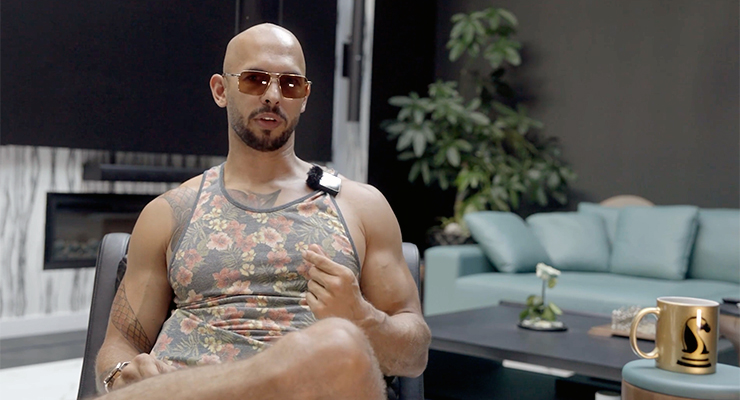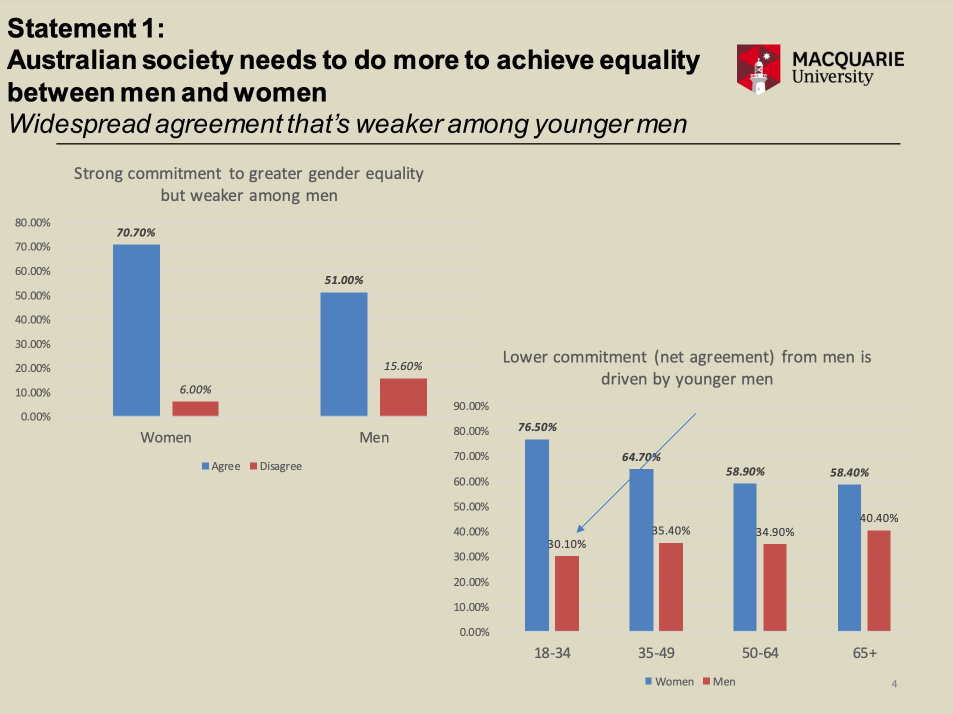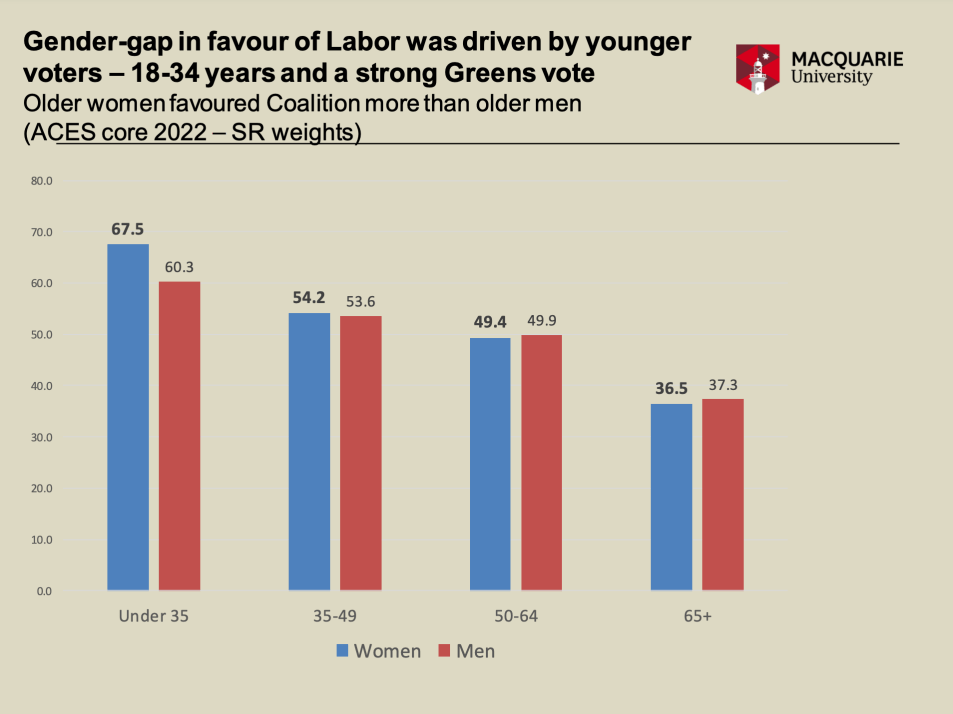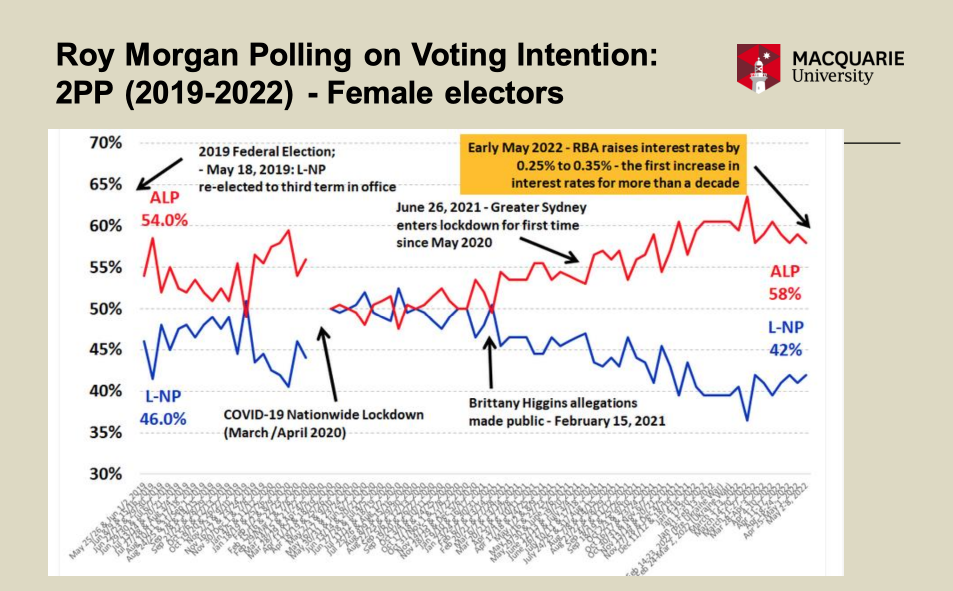
Andrew Tate, former kickboxer turned misogynist internet celebrity, has been banned from YouTube, TikTok, Facebook and Instagram for violating hate speech protocols.
No wonder. He has claimed women “belong in the home, can’t drive, and are a man’s property”, has openly discussed being accused of violence by multiple women, and is being investigated by Romanian authorities for allegations of human trafficking and rape.
But before he was banned, this loathsome provocateur grew worryingly popular. In July he was googled more times than Donald Trump or Kim Kardashian. Even now, as Crikey’s Cam Wilson reports, his move to alt-tech video platform Rumble sent it to No. 1 one on the Apple and Google app stores.
So who are Tate’s fans? And do they represent a broader wellspring of bigotry?
Angry young men
It’s hard to get reliable data on Tate’s audience because many of his videos were uploaded from an opaque network of fan accounts. But he recently described his fans as predominantly young.
Jordan Peterson, a similar (though somewhat less crass) reactionary “guru”, initially described his online audience as “80% male” and skewing young, though he now claims it has diversified.
Young people tend to be more left-leaning than older generations. But there is evidently a cohort of young men who are receptive to right-wing — and specifically anti-feminist — commentary. Research suggests this online “manosphere” thrives on social isolation, which has risen significantly among young men. Content creators like Tate seek to convert it into resentment of others, especially women.
But how big is this “angry young men” cohort? And do its views just manifest online, or does it translate to the ballot box?
New data shows Australian youth divided
Research presented at a recent Macquarie University seminar, using data for the Australian Cooperative Election Survey, clarifies these questions in the Australian context.
It showed young men and women are more starkly divided on gender issues than older generations. This is partly because older women have more socially conservative views compared with younger women, putting them closer to men their age. Conversely, young women are very socially progressive, whereas by some measures the average young man is actually more conservative on gender issues than his father’s or grandfather’s generation.

The data also showed a greater gender split among young people’s votes in the May federal election. Older people of these two genders tended to vote similarly, and more conservatively, as they aged. Young men were more likely to vote Labor than older men, but young women did so in noticeably greater numbers. There was also a significant gender gap among Greens voters.

A gendered campaign?
It’s not precisely clear whether the gender split among young people on social issues and voting is related. But a key event in former prime minister Scott Morrison’s tenure — Brittany Higgins’ rape allegations — show it might have been a factor. Women voters moved significantly towards Labor in the aftermath.

“Young women I wouldn’t say were radicalised, but definitely politicised,” said gender expert Michelle Arrow, who worked on the research. “But for men, [their voting intention] didn’t change much. The debate Higgins and [Grace] Tame started was about male behaviour. I wonder if that left many young men feeling uncomfortable or even personally implicated.”
Other possible explanations are income and education. “This also reflects a reconfiguration of who Labor’s core constituency is,” Arrow said. “The majority of university students are now women, and more jobs now require university credentials. But the main ones that don’t, but still provide a ticket to good incomes, are trades — which remain highly male dominated — and which have become more entrepreneurial.”
Increasingly, young women are more strongly invested in their labour, which aligns their interests with left-leaning, pro-worker parties.
“We saw this in the way the parties crafted their images,” Arrow said. “A lot of Morrison’s image was around the tradie, who is an aspirational figure for many young men. Contrast that with Albanese, who was interviewed by Grace Tame in InStyle magazine and forefronted the care industries.”
Global shift in gender politics
This isn’t just an Australian phenomenon. Young Americans are also politically divided by gender.

Shaun Wilson, another academic who worked on the research, cautioned against over-extrapolating the data: “Young men are still majority left-leaning, partly due to economic issues. But there is a curious persistence of conflict over gender roles that is not necessarily increasing but not going away either.”
Diverging social views suggest cultural reactionaries like Tate are succeeding in courting the young male demographic. Their success online might not yet be flowing through to the ballot box in great numbers, but their intentions are clearly political — Tate has hung out with far-right UK politician Nigel Farage, for instance.
“It’s a pretty disturbing picture around the world,” Arrow said. “We’re seeing the radicalisation of many young men. Figures like Donald Trump and the far right are looking to young men much more than young women.”
For those of us committed to equality, abating the far right’s appeal to young men demands promoting economic solidarity, combating social isolation and persuasively pushing back against bigotry. But unlike Tate, the views he typifies might prove harder to cancel.
Do you lean more left or right than your partner on social issues? Let us know by writing to letters@crikey.com.au. Please include your full name to be considered for publication. We reserve the right to edit for length and clarity.








It would be nice to see some research looking at what characteristics of young men make them inclined towards regressive conservative views of women. What are the sub-populations that account for this drift? I have a hunch that it has a lot to do with the fact that there is a group of people who are white, hetero men who are being told that they are privileged, but who are being shout out (like almost everyone else) of success and security in an increasingly unequal society. The invaldiation of being told they have it so good when their lives are far less certain than those of their parents leads to their rage being focused on those who are telling them they are privileged and the objects of those commentators affections, rather than the people that are actually causing the inequality that makes their lives harder.
Hence Donald Trump, who represents a prime demographic that is making the lives of MAGA-ites worse, can so easily win their affections by pointing out the hypocrisy of seemingly wealthy, well-educated commentators who focus on identity politics.
Without some solidarity we will get nowhere. Sure it’s worse to be female/black/… and poor in the USA than merely poor, but allowing these groups to be divided sets back any progressive agenda.
Of course some of them are probably just assholes, but I suspect that is probably <10%. I work with offenders, many of whom have committed acts of violence against women. The minority of them I would categorise as just assholes. The rest are just struggling through life and are bitter and unable to empathise because they are overwhelmed by their own disadvantage.
I broadly agree with this, unfortunately in an increasingly intersectional world, Mr Tate is serving a particular audience like many other identity based celebrities.
At the risk of bringing up old battles, I suspect that many Tate supporters were once maligned as “Bernie bros”, and would have stayed in the broad left if 2015-16 played a little different. That’s not to say that Sanders was uncaring of equality (he was quite rightly put it at the centre of his activism), but he focused on “win-wins” rather than identity division.
Of course, we are taking about a US figure here – I think we should more actively push against the intrusion of US political framing on Australian politics, and focus on the relevant issues here (indigenous disadvantage is different in Aus vs US, and race relations are fundamentally different in character).
I know it’s tangential to this article, but how is indigenous disadvantage different between the US and us? I see it as smilar, and I get annoyed by the way atheboiginal and African American situations are often conflated.
It’s worse in Australia, taking from the perspective that indigenous economic empowerment. The reservation system is often lampooned in US media (“indian casinos” and all that) but it at least is a source of jobs and income for those communities.
I agree however that the African American experience and discourse is inappropriately applied to Australia, which I think negatively impacts out ability to discuss Australian specific issues of inequality.
What about from the perspective of “closing the gap” criteria?
For a start, African-Americans aren’t indigenous to North America. I think that results in a lower acceptance amongst the remainder of the population.
…unlike the WASPs…
Who just seem to have superiority down pat.
My impression is actually quite the opposite: that the worst offenders are the rich private school boys. The ones who’ll probably never “have to” work with you. The ones who are too used to the thought that the world rightly *belongs* to them.
I also broadly agree but we can get too hung up (sic) on the socio-economic. What is going on here is misogyny and a lot of misogyny is driven by sexual and emotional insecurity and indeed fear of being seen to be sexually inadequate and just unattractive to the other sex. Hence fantasies and claims of rights to control and being victimised. Young men are more likely to be prone to this of course. Doesn’t excuse it though. Part of growing to maturity is getting past it but there are men and whole cultures that can’t. Misogyny is very much a group activity and Tate is both an enabler and exploiter here. At it’s sickest this misogyny absolutely leads to rape and murder.
Men attracted to Tate, like incels and others, need help but at the same time it’s hard to be sympathetic. As it is to be sympathetic with white people suffering at the bottom of the working class while they are off on racist rants to try and ease their psychological pains. However, to overcome these social evils we have to some extent put aside our repugnance in order to address the causes, though zero tolerance also has its place.
I suspect you’re correct. The main function of the Ku Klux Klan has always been to enable those at the bottom of the socio-economic pile to feel better about themselves by giving them someone to punch down onto. Neoliberalism has been a pea-and-thimble trick for many less-educated white males, promising them the world but putting them behind the eight-ball in a super-competitive jobs market. The Tates and Trumps of the world cash in on the resentment.
In recent years, a bloke told me that his job was to work with men imprisoned for voilence against women. One of the men told the bloke that he doesn’t and wouldn’t hit women. The bloke replied “so, your wife isn’t a woman?”…..VERY telling interaction.
A lot of young men are total fish out of water socially because of a life spent almost entirely on line. They have very poor abilities when it comes to relating to actual human beings, up close, face to face, so they feel rejected and they get quite bitter when they do attempt to relate to a real person, especially a girl. From there they convince themselves that they are being rejected because they arent sports stars or “jocks” and next minute they are full blown misogynists and reading all sorts of confirming crap on the net.
It used to be hard enough before the net. Now its serious for a very large percentage of our young men.
We need to be more inclusive and egalitarian in our language and our communication of causes, so as not to create divisions and resentment. We should be focussing on supporting all human rights and protecting all people when they are vulnerable, rather than singling out certain groups or genders and highlighting divisions rather than the common humanity.
There is a lot of talk about preventing violence to women and girls which is an important issue, but to some listeners the exclusive focus suggests special treatment for women and girls whilst ignoring others who are harmed by violence. There is a lot of violence against men and boys too, as well as against transgender people, older people, disabled people, children, particular cultures etc. We could shape all this discussion in a more positive way, about looking after all people.
The enemy is violence and aggression, not a particular gender, age, culture or ability group. We could talk about it in this way and highlight the dangers of violence to individuals, families and communities as a whole, as well as the costs. All of us would be safer if we were all more caring of others and did all we could to protect them from being bullied, attacked and abused, supporting them when it happens whilst immediately pulling up the perpetrators for their abusive behaviour.
We really don’t need to focus on our differences, as we’d gain more understanding of each other by sharing what we have in common.
Again more imported US alt right and related agitprop propagated by Bannon, Fox, etc. to co-opt younger, mostly males, into the radical right ecosystem to oppose liberal democracy and the Democrats; backgrounded by dollops of authoritarianism.
I am 67 years old. There is no age criteria on what constitutes bigotry and mysoginy. I have opposed these 2 evils my whole adult life. I am appalled that these evils are now more prevalent than in my youth. All we have changed is the structural/formal form of sexism, not the deep rooted mysoginy which causes males to hate, or to at least mistrust women. My view is that males who think that are weak and deformed. That you even think you hav etc be superior to females is a humanist defects.